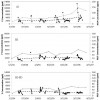 Although Best Management Practices (BMPs) have been developed to reduce the loss of nutrients, like P, to the environment, limited information exists on the main factors that control P loss to Florida groundwater. For example, while it is generally accepted that both irrigation and fertilizer P impact groundwater P, growers often ask if controlling one is more advantageous than the other in their efforts to reduce P leaching. There exists no easy tool to link fertilizer P input and other factors to groundwater P concentration. This 5-page fact sheet uses long-term data (six growing seasons) from a farm in Immokalee, Florida, to explain the effects of soil and agronomic factors, along with seasonal rainfall, on groundwater P. From these factors are derived simple equations to predict groundwater P concentrations. Written by Sanjay Shukla, Gregory S. Hendricks, Thomas A. Obreza, and Willie Harris, and published by the UF Department of Agricultural and Biological Engineering, August 2014.
Although Best Management Practices (BMPs) have been developed to reduce the loss of nutrients, like P, to the environment, limited information exists on the main factors that control P loss to Florida groundwater. For example, while it is generally accepted that both irrigation and fertilizer P impact groundwater P, growers often ask if controlling one is more advantageous than the other in their efforts to reduce P leaching. There exists no easy tool to link fertilizer P input and other factors to groundwater P concentration. This 5-page fact sheet uses long-term data (six growing seasons) from a farm in Immokalee, Florida, to explain the effects of soil and agronomic factors, along with seasonal rainfall, on groundwater P. From these factors are derived simple equations to predict groundwater P concentrations. Written by Sanjay Shukla, Gregory S. Hendricks, Thomas A. Obreza, and Willie Harris, and published by the UF Department of Agricultural and Biological Engineering, August 2014.
http://edis.ifas.ufl.edu/ae507
Author: dihagan
A Beginner's Guide to Water Management: Aquatic Plants in Florida Lakes
 This circular represents a summary of current knowledge on aquatic plants and aquatic plant management strategies, highlighting the Florida situation. The major focus of this circular is the management of aquatic plants as opposed to dealing with nutrients, algae, or water clarity. Included are sections on aquatic plant biology, aquatic plant management problems, and aquatic plant management techniques. This 43-page guide was written by Florida LAKEWATCH; reviewed by Mark Hoyer, and published by the UF Department of Fisheries and Aquatic Sciences, June 2014.
This circular represents a summary of current knowledge on aquatic plants and aquatic plant management strategies, highlighting the Florida situation. The major focus of this circular is the management of aquatic plants as opposed to dealing with nutrients, algae, or water clarity. Included are sections on aquatic plant biology, aquatic plant management problems, and aquatic plant management techniques. This 43-page guide was written by Florida LAKEWATCH; reviewed by Mark Hoyer, and published by the UF Department of Fisheries and Aquatic Sciences, June 2014.
http://edis.ifas.ufl.edu/fa163
Using Multi-Sensor Soil Moisture Probes to Decide When and How Long to Run Drip Irrigation
 Several methods of irrigation scheduling are used by producers, including the feel method, calendar method, soil water balance method, and soil moisture measurement method. The latter two methods are superior and help avoid too much or too little irrigation, because they consider the water storage within the plant root zone. The soil moisture method commonly involves measuring soil moisture in the root zone and irrigating when the soil moisture falls below 33% or 50% depletion of available water capacity (water in soil that is available to the plant). This 6-page fact sheet was written by Sanjay Shukla and Nathan Holt, and published by the UF Department of Agricultural and Biological Engineering, July 2014.
Several methods of irrigation scheduling are used by producers, including the feel method, calendar method, soil water balance method, and soil moisture measurement method. The latter two methods are superior and help avoid too much or too little irrigation, because they consider the water storage within the plant root zone. The soil moisture method commonly involves measuring soil moisture in the root zone and irrigating when the soil moisture falls below 33% or 50% depletion of available water capacity (water in soil that is available to the plant). This 6-page fact sheet was written by Sanjay Shukla and Nathan Holt, and published by the UF Department of Agricultural and Biological Engineering, July 2014.
http://edis.ifas.ufl.edu/ae505
Interpreting Dye Test Results for Improved Drip Irrigation Management for the Mulched Vegetable-Production Systems in South Florida
 With Florida’s water withdrawals expected to increase by 30% from 2000 to 2030, South Florida vegetable producers are conserving water by converting traditional seepage irrigation systems to drip irrigation, which can have up to 90% efficiency when used effectively. Dye tests can provide important information for implementing a proper drip irrigation management program. This 6-page fact sheet was written by Sanjay Shukla, Nathan Holt, and Gregory Hendricks, and published by the UF Department of Agricultural and Biological Engineering, July 2014.
With Florida’s water withdrawals expected to increase by 30% from 2000 to 2030, South Florida vegetable producers are conserving water by converting traditional seepage irrigation systems to drip irrigation, which can have up to 90% efficiency when used effectively. Dye tests can provide important information for implementing a proper drip irrigation management program. This 6-page fact sheet was written by Sanjay Shukla, Nathan Holt, and Gregory Hendricks, and published by the UF Department of Agricultural and Biological Engineering, July 2014.
http://edis.ifas.ufl.edu/ae506
Datos sobre los flavonoides
 Los flavonoides son compuestos orgánicos que se encuentran naturalmente en plantas. Existen en la naturaleza más de 5 mil compuestos flavonoides, aquellos que se encuentran en las comidas caen en seis categorías: flavonoles, antocianinas, iso-flavonoides, flavan-3 oles, flavonas y flavanonas. Los compuestos en estas categorías son de interés por los beneficios potenciales sobre la salud. The English version of this document is Facts about Flavonoids. This 4-page fact sheet was written by Inbar Schapsis y Wendy J. Dahl, and published by the UF Department of Food Science and Human Nutrition, July 2014.
Los flavonoides son compuestos orgánicos que se encuentran naturalmente en plantas. Existen en la naturaleza más de 5 mil compuestos flavonoides, aquellos que se encuentran en las comidas caen en seis categorías: flavonoles, antocianinas, iso-flavonoides, flavan-3 oles, flavonas y flavanonas. Los compuestos en estas categorías son de interés por los beneficios potenciales sobre la salud. The English version of this document is Facts about Flavonoids. This 4-page fact sheet was written by Inbar Schapsis y Wendy J. Dahl, and published by the UF Department of Food Science and Human Nutrition, July 2014.
http://edis.ifas.ufl.edu/fs249
Understanding the Changes to the Patient’s Bill of Rights as a Result of the Affordable Care Act
 The Affordable Care Act is a legislative act that has provided individuals and families more choices related to healthcare insurances. It offers consumers new protections and benefits by creating a more defined Patient’s Bill of Rights. This 2-page fact sheet was written by Deanna Andrews and Martie Gillen, and published by the UF Department of Family Youth and Community Sciences, May 2014.
The Affordable Care Act is a legislative act that has provided individuals and families more choices related to healthcare insurances. It offers consumers new protections and benefits by creating a more defined Patient’s Bill of Rights. This 2-page fact sheet was written by Deanna Andrews and Martie Gillen, and published by the UF Department of Family Youth and Community Sciences, May 2014.
http://edis.ifas.ufl.edu/fy1410
Is It Worth Switching from Natural Service to Artificial Insemination? A Comparison of Reproductive Performance and Profitability in Dairy Herds
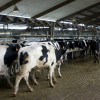 Reproductive efficiency is a key determinant of dairy cow profitability. A considerable portion of dairy producers in the United States still use NS in at least part of their breeding program. This 3-page fact sheet presents the results of papers that compared the reproductive performance and profitability of dairy cows submitted to natural service or a combination of timed AI and natural service. Written by Klibs N. Galvão, Eduardo S. Ribeiro, and Jose Eduardo P. Santos, and published by the UF Department of Veterinary Medicine-Large Animal Clinical Sciences, June 2014.
Reproductive efficiency is a key determinant of dairy cow profitability. A considerable portion of dairy producers in the United States still use NS in at least part of their breeding program. This 3-page fact sheet presents the results of papers that compared the reproductive performance and profitability of dairy cows submitted to natural service or a combination of timed AI and natural service. Written by Klibs N. Galvão, Eduardo S. Ribeiro, and Jose Eduardo P. Santos, and published by the UF Department of Veterinary Medicine-Large Animal Clinical Sciences, June 2014.
http://edis.ifas.ufl.edu/vm200
Should Genetics Be Blamed for High Incidence of Uterine Disease in Dairy Cows?
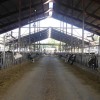 Uterine diseases are highly prevalent in high-producing dairy cows. They have been associated with decreased pregnancy per artificial insemination (AI), extended interval to pregnancy, increased culling, and economic losses. This 3-page fact sheet presents the results of a recent paper that examined how alterations on the TLR genes, which control innate immune response, affect the susceptibility to uterine diseases. Written by Klibs N. Galvão, Christopher M. Seabury, and Pablo Pinedo, and published by the UF Department of Veterinary Medicine-Large Animal Clinical Sciences, May 2014.
Uterine diseases are highly prevalent in high-producing dairy cows. They have been associated with decreased pregnancy per artificial insemination (AI), extended interval to pregnancy, increased culling, and economic losses. This 3-page fact sheet presents the results of a recent paper that examined how alterations on the TLR genes, which control innate immune response, affect the susceptibility to uterine diseases. Written by Klibs N. Galvão, Christopher M. Seabury, and Pablo Pinedo, and published by the UF Department of Veterinary Medicine-Large Animal Clinical Sciences, May 2014.
http://edis.ifas.ufl.edu/vm197
Convergent Lady Beetle Hippodamia convergens Guérin-Méneville (Insecta: Coleoptera: Coccinellidae)
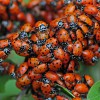 The convergent lady beetle, Hippodamia convergens Guérin-Méneville, is among the most common lady beetle species throughout North America and is an important natural enemy of aphids, scales, thrips, and other soft-bodied insects. It will also feed on pollen and nectar from flowers when prey is scarce. This species can be found in habitats ranging from grasslands, forests, agricultural fields, gardens, and natural parks. It is one of the few natural enemies that are currently wild-collected from mass aggregations for distribution to the pest control industry. This 5-page fact sheet was written by Luis F. Aristizábal and Steven P. Arthurs, and published by the UF Department of Entomology and Nematology, June 2014.
The convergent lady beetle, Hippodamia convergens Guérin-Méneville, is among the most common lady beetle species throughout North America and is an important natural enemy of aphids, scales, thrips, and other soft-bodied insects. It will also feed on pollen and nectar from flowers when prey is scarce. This species can be found in habitats ranging from grasslands, forests, agricultural fields, gardens, and natural parks. It is one of the few natural enemies that are currently wild-collected from mass aggregations for distribution to the pest control industry. This 5-page fact sheet was written by Luis F. Aristizábal and Steven P. Arthurs, and published by the UF Department of Entomology and Nematology, June 2014.
http://edis.ifas.ufl.edu/in1037
Healthy Living: Diabetes Warning Signs
 Could you have diabetes and not know it? It is possible. More than one-fourth of the people who have diabetes don’t know they have the disease! Treating and managing diabetes greatly decreases the risk of diabetes-related health problems. Review the list of warning signs below and check any that you have experienced. This 2-page fact sheet was written by Linda B. Bobroff, and published by the UF Department of Family Youth and Community Sciences, July 2014.
Could you have diabetes and not know it? It is possible. More than one-fourth of the people who have diabetes don’t know they have the disease! Treating and managing diabetes greatly decreases the risk of diabetes-related health problems. Review the list of warning signs below and check any that you have experienced. This 2-page fact sheet was written by Linda B. Bobroff, and published by the UF Department of Family Youth and Community Sciences, July 2014.
http://edis.ifas.ufl.edu/fy084
Management of Powdery Mildew in Beans
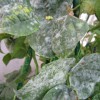 Powdery mildew is one of the most commonly occurring diseases on many types of beans. Although the causal organism rarely causes extensive damage, significant yield losses were reported in Columbia County when infection occurred in dry beans prior to flowering. Accurately identifying this disease and immediately taking action for control are critical to effectively prevent spread of powdery mildew in order to reduce significant losses of yield and quality. This 4-page fact sheet was written by Qingren Wang, Shouan Zhang, and Teresa Olczyk, and published by the UF Department of Plant Pathology, June 2014.
Powdery mildew is one of the most commonly occurring diseases on many types of beans. Although the causal organism rarely causes extensive damage, significant yield losses were reported in Columbia County when infection occurred in dry beans prior to flowering. Accurately identifying this disease and immediately taking action for control are critical to effectively prevent spread of powdery mildew in order to reduce significant losses of yield and quality. This 4-page fact sheet was written by Qingren Wang, Shouan Zhang, and Teresa Olczyk, and published by the UF Department of Plant Pathology, June 2014.
http://edis.ifas.ufl.edu/pp311
Bagrada Bug, Painted Bug, Bagrada Hilaris (Burmeister) (Insecta: Hemiptera: Pentatomidae)
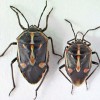 The bagrada bug is a pest of concern to Florida agriculture, and there are several similar species with which it may be confused. Bagrada bugs have been detected on plant material in trucks traveling across state borders. Twelve interceptions have been made from 2011-2013 at the FDACS agricultural inspection stations along the interstate at the Florida border. Due to the number of recent interceptions, and the ability of this pest to feed on many plants, the bagrada bug has potential to establish in Florida. Therefore, monitoring, surveillance, and educational efforts have begun in Florida to facilitate early detection and rapid response as the spread of the bagrada bug continues to other areas. This 7-page fact sheet was written by Eric LeVeen and Amanda C. Hodges, and published by the UF Department of Entomology and Nematology, July 2014.
The bagrada bug is a pest of concern to Florida agriculture, and there are several similar species with which it may be confused. Bagrada bugs have been detected on plant material in trucks traveling across state borders. Twelve interceptions have been made from 2011-2013 at the FDACS agricultural inspection stations along the interstate at the Florida border. Due to the number of recent interceptions, and the ability of this pest to feed on many plants, the bagrada bug has potential to establish in Florida. Therefore, monitoring, surveillance, and educational efforts have begun in Florida to facilitate early detection and rapid response as the spread of the bagrada bug continues to other areas. This 7-page fact sheet was written by Eric LeVeen and Amanda C. Hodges, and published by the UF Department of Entomology and Nematology, July 2014.
http://edis.ifas.ufl.edu/in1041
Cow Math: Using Weaning Weight to Estimate Cowherd Productivity
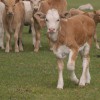 “You can’t get where you’re going unless you know where you are.”
“You can’t get where you’re going unless you know where you are.”
The ability to measure performance is a key component in all beef cow operations, and measuring production efficiency is becoming increasingly important. Regardless of size, producers must be able to identify the current status of their operation in order to make adjustments toward improvement. Identifying and culling the cows within the herd that are less efficient at producing a weaned calf in the environment and management system used on the ranch can be a powerful tool to improve the herd. This 8-page fact sheet was written by Phillip Lancaster and John Arthington, and published by the UF Department of Animal Science, April 2014.
http://edis.ifas.ufl.edu/an129
Facts about Quinoa
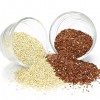 The U.S. Department of Agriculture’s MyPlate nutrition guide recommends that Americans consume half of their grains from whole grain foods. Whole wheat bread and oatmeal are whole grain foods that are familiar to most Americans, but lots of other whole grain foods are also available. An example of an unfamiliar whole grain food is quinoa (pronounced keen-wa). Quinoa is a nutritious seed that is simple to prepare. It can be served as a hot cereal or side dish, as a cold salad similar to pasta salad, or it can be used in recipes in place of rice or other grains. It also has the advantage of being gluten free, which is a must for people diagnosed with celiac disease. Follow the link to learn more about quinoa and what it has to offer. This 3-page fact sheet was written by Alexandra Dati, Gail Kauwell, and Amy Simonne, and published by the UF Department of Family Youth and Community Sciences, May 2014.
The U.S. Department of Agriculture’s MyPlate nutrition guide recommends that Americans consume half of their grains from whole grain foods. Whole wheat bread and oatmeal are whole grain foods that are familiar to most Americans, but lots of other whole grain foods are also available. An example of an unfamiliar whole grain food is quinoa (pronounced keen-wa). Quinoa is a nutritious seed that is simple to prepare. It can be served as a hot cereal or side dish, as a cold salad similar to pasta salad, or it can be used in recipes in place of rice or other grains. It also has the advantage of being gluten free, which is a must for people diagnosed with celiac disease. Follow the link to learn more about quinoa and what it has to offer. This 3-page fact sheet was written by Alexandra Dati, Gail Kauwell, and Amy Simonne, and published by the UF Department of Family Youth and Community Sciences, May 2014.
http://edis.ifas.ufl.edu/fy1408
Biology and Management of Common Purslane in Fruiting Vegetables, Cucurbits, and Strawberries
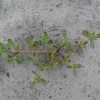 Purslane occurs throughout the year in Florida. It produces thousands of seeds per plant, which germinate readily, but can also persist in the soil for up to 15 years. Vegetative shoot fragments can survive on the soil surface for extended periods of time, then re-root when exposed to moisture and can even flower and produce seeds after they have been pulled from the soil. This characteristic enables purslane to persist and spread following cultivation. This 4-page fact sheet was written by Nathan S. Boyd, Andrew W. MacRae, Rick Kelly, and Ixchel M. Hernandez, and published by the UF Department of Horticultural Sciences, July 2014.
Purslane occurs throughout the year in Florida. It produces thousands of seeds per plant, which germinate readily, but can also persist in the soil for up to 15 years. Vegetative shoot fragments can survive on the soil surface for extended periods of time, then re-root when exposed to moisture and can even flower and produce seeds after they have been pulled from the soil. This characteristic enables purslane to persist and spread following cultivation. This 4-page fact sheet was written by Nathan S. Boyd, Andrew W. MacRae, Rick Kelly, and Ixchel M. Hernandez, and published by the UF Department of Horticultural Sciences, July 2014.
http://edis.ifas.ufl.edu/hs1238
Bermudagrass Stem Maggot: A New Pest in Florida
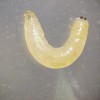 Bermudagrass is a dominant hay crop in Florida. Now, hay producers are facing a new emerging pest problem in bermudagrass and stargrass production fields. The bermudagrass stem maggot, is a new exotic invasive fly. It was first discovered damaging bermudagrass pasture and hay fields in Georgia. The identification of the fly was the first record of this species in North America, and it has the potential to become a serious pest of bermudagrass and stargrass in Florida. This 2-page fact sheet was written by Ann Blount, Tim Wilson, Jay Ferrell, Russ Mizell, and Jonael Bosques, and published by the UF Department of Agronomy, June 2014.
Bermudagrass is a dominant hay crop in Florida. Now, hay producers are facing a new emerging pest problem in bermudagrass and stargrass production fields. The bermudagrass stem maggot, is a new exotic invasive fly. It was first discovered damaging bermudagrass pasture and hay fields in Georgia. The identification of the fly was the first record of this species in North America, and it has the potential to become a serious pest of bermudagrass and stargrass in Florida. This 2-page fact sheet was written by Ann Blount, Tim Wilson, Jay Ferrell, Russ Mizell, and Jonael Bosques, and published by the UF Department of Agronomy, June 2014.
http://edis.ifas.ufl.edu/ag384
Dealing with Food Allergies
 A food allergy is an immune system reaction that happens after a person consumes what is normally considered a safe food. Food allergies occur more often in children than in adults: 4%–8% of those aged 4 or under and about 2% of adults are affected. Allergic reactions from food have led to over 20,000 emergency room visits per year. Annually, between 150 and 200 fatalities associated with food allergic reactions occur in the United States. This 4-page fact sheet was written by Keith R. Schneider, Renée Goodrich Schneider, Soohyoun Ahn, and Susie Richardson, and published by the UF Department of Food Science and Human Nutrition, January 2014.
A food allergy is an immune system reaction that happens after a person consumes what is normally considered a safe food. Food allergies occur more often in children than in adults: 4%–8% of those aged 4 or under and about 2% of adults are affected. Allergic reactions from food have led to over 20,000 emergency room visits per year. Annually, between 150 and 200 fatalities associated with food allergic reactions occur in the United States. This 4-page fact sheet was written by Keith R. Schneider, Renée Goodrich Schneider, Soohyoun Ahn, and Susie Richardson, and published by the UF Department of Food Science and Human Nutrition, January 2014.
http://edis.ifas.ufl.edu/fs123
Dealing with a Florida Winter Weather Event
 People in Florida might not consider planning and preparing for winter weather events because of its normally mild temperatures. However, some northern Florida regions experience temperatures below freezing and occasional snow and ice storms during the winter months. These storm events can be dangerous and even deadly. These simple safety reminders can help you and your family be better prepared for Florida’s winter weather events. This 3-page fact sheet was written by Randall Cantrell, Judy Corbus, and Michael Spranger, and published by the UF Department of Family Youth and Community Sciences, April 2014.
People in Florida might not consider planning and preparing for winter weather events because of its normally mild temperatures. However, some northern Florida regions experience temperatures below freezing and occasional snow and ice storms during the winter months. These storm events can be dangerous and even deadly. These simple safety reminders can help you and your family be better prepared for Florida’s winter weather events. This 3-page fact sheet was written by Randall Cantrell, Judy Corbus, and Michael Spranger, and published by the UF Department of Family Youth and Community Sciences, April 2014.
http://edis.ifas.ufl.edu/fy1407
The Florida Bull Test, 2013-2014
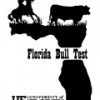 The 2013-2014 Florida Bull Test was a 112-day performance test and a breeding soundness evaluation of each bull that qualified for the auction. Table 1 summarizes feed efficiency data; Table 2 individual feed intake and feed efficiency; and Table 3 individual animal performance. This 10-page fact sheet was written by Vitor R. G. Mercadante, G. Cliff Lamb, and Nicolas DiLorenzo, and published by the UF Department of Animal Sciences, May 2014.
The 2013-2014 Florida Bull Test was a 112-day performance test and a breeding soundness evaluation of each bull that qualified for the auction. Table 1 summarizes feed efficiency data; Table 2 individual feed intake and feed efficiency; and Table 3 individual animal performance. This 10-page fact sheet was written by Vitor R. G. Mercadante, G. Cliff Lamb, and Nicolas DiLorenzo, and published by the UF Department of Animal Sciences, May 2014.
http://edis.ifas.ufl.edu/an301
BMP-Recommended Water and Phosphorus Inputs for Tomato and Watermelon Can Reduce Environmental Losses of Phosphorus and Save Water
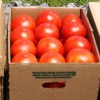 A BMP study was conducted at the research farm of the UF/IFAS Southwest Florida Research and Education Center in Immokalee, FL. The study evaluated two production systems made up of two levels of water and fertilizer inputs for tomato and watermelon production with seepage irrigation. The average water and P fertilizer rates used by growers in south Florida were contrasted with the recommended BMP rates. Applying BMP-recommended water and phosphorus (P) inputs for seepage-irrigated tomato and watermelon in Florida can reduce water use and P leaching to groundwater without adversely impacting fruit yield. However, given the adverse impacts on watermelon yield due to lower than sufficient levels of K, further research is needed to evaluate the fertilizer recommendations for watermelon, especially K2O rates, to ensure economic viability of farms. Our results showed that adoption of BMP-recommended P rates as a BMP did not reduce crop yield and improved water quality. This 4-page fact sheet was written by Sanjay Shukla, Gregory S. Hendricks, Thomas A. Obreza, and Willie G. Harris, and published by the UF Department of Agricultural and Biological Engineering, June 2014.
A BMP study was conducted at the research farm of the UF/IFAS Southwest Florida Research and Education Center in Immokalee, FL. The study evaluated two production systems made up of two levels of water and fertilizer inputs for tomato and watermelon production with seepage irrigation. The average water and P fertilizer rates used by growers in south Florida were contrasted with the recommended BMP rates. Applying BMP-recommended water and phosphorus (P) inputs for seepage-irrigated tomato and watermelon in Florida can reduce water use and P leaching to groundwater without adversely impacting fruit yield. However, given the adverse impacts on watermelon yield due to lower than sufficient levels of K, further research is needed to evaluate the fertilizer recommendations for watermelon, especially K2O rates, to ensure economic viability of farms. Our results showed that adoption of BMP-recommended P rates as a BMP did not reduce crop yield and improved water quality. This 4-page fact sheet was written by Sanjay Shukla, Gregory S. Hendricks, Thomas A. Obreza, and Willie G. Harris, and published by the UF Department of Agricultural and Biological Engineering, June 2014.
http://edis.ifas.ufl.edu/ae504